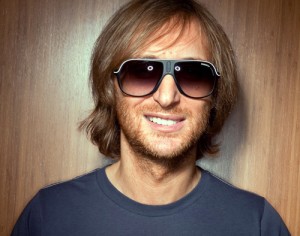 Another day, another Deadmau5 rant. At times, from the pictures of his cat to random digs at Avicii, Deadmau5’s complaints morph into whining, but at others, he makes a decent argument. The latest is his beef with Afrojack, which culminated in toss-off track “Drop Da Bomb.”
Another day, another Deadmau5 rant. At times, from the pictures of his cat to random digs at Avicii, Deadmau5’s complaints morph into whining, but at others, he makes a decent argument. The latest is his beef with Afrojack, which culminated in toss-off track “Drop Da Bomb.”
After telling the Dutch DJ, “100% of people, expect to hear new things, ever evolving sounds and compositions, new genres, originality. F*ck your Mcdonalds,” Zimmerman posted a 46-second track that intentionally pulls out EDM’s most cliché elements, from the buildup to the drop to “drop the bass” leading into a complete change in melody.
While many might just dismiss Deadmau5 as having another hissy fit on the internet, a CP24 interview in preparation for the Veld Festival paints him as more articulate. “I don’t think enough EDM artists are taking risks right now and that’s the big problem,” he explained. “Everyone wants to be safe, and do that thing you know is going to work.
“Someone, please take the wheel and turn it. Not to say I’m going to be that guy and I’m going to crusade on that journey of making turbo dub neo pro step but I would just like to encourage a bit of diversity and the way that I do that is the only way I know how, which is to make some downtempo thing … and just like flex engineering muscle on a piece or two.”
Zimmerman’s not alone with this sentiment. At the same time he mocked Afrojack with “Drop da Bomb,” Swedish producer duo Daleri put out “Epic Mashleg”, a short mashup that, rather than steal from EDM’s most generic and overused moments, just borrows from the Beatport Top 10 – and shows just how often so many mainstream EDM artists, even established ones like Fedde Le Grand and Chuckie, reuse the same rhythmic and melodic bits over and over.
When Laziness and Success Seem Like the Same Thing
The argument Zimmerman and Daleri both make doesn’t pertain to all of electronic dance music. After all, considering their modern-day prominence, trap and dubstep didn’t make the cut. But, unlike what Zimmerman verbalized and Daleri sonically implies, all tracks are what passes as mainstream EDM these days.
So, in that case, do they have a point other than “All mainstream music sounds the same”? Bassnectar, in an interview in November 2012, expressed that this occurrence is inevitable – the narrow path of acceptable sounds, all of which blend together into radio-friendly, palatable hits, is just what happens when a genre finally finds mainstream acceptance. “
Not everyone agrees. An equally-prominent argument throughout the mainstream (and even just below the surface) EDM sphere is, there are no more subgenre distinctions. Last year in our interview with Marco V at Pacha NYC, he expressed that he no longer considers himself tech-trance because of this trend, while, in more recent months, Wolfgang Garner at Camp Bisco described every EDM track as a mashup of all subgenres.
 “I feel like the ‘big’ sound in dance music right now is just this mashup of every single subgenre possible, to try and appeal to the most people possible, with these cheesy played-out trance pads and vocal hooks, it all sounds exactly the same and it’s really bad for the most part, and the scariest thing is that people are reacting to this stuff, crowds at festivals and clubs are wanting more of it,” he told White River Rafting. “A few of us have deemed it the EDM Apocalypse. Dance music is in a really weird place right now. I don’t know where it’s going to go.”
“I feel like the ‘big’ sound in dance music right now is just this mashup of every single subgenre possible, to try and appeal to the most people possible, with these cheesy played-out trance pads and vocal hooks, it all sounds exactly the same and it’s really bad for the most part, and the scariest thing is that people are reacting to this stuff, crowds at festivals and clubs are wanting more of it,” he told White River Rafting. “A few of us have deemed it the EDM Apocalypse. Dance music is in a really weird place right now. I don’t know where it’s going to go.”
Or, what if the whole “EDM sounds the same” argument is just a merging of the two: That all subgenres have turned into this melting pot known as EDM and the more prominent producers keep returning to the same rhythms, sounds, key changes, and sound structures for the safety of scoring a top hit on the Beatport charts? YourEDM.com did a comparison similar to Daleri’s but on a larger scale. In examining some of the top Beatport tracks of the past year, YourEDM found tracks that in their entirety stick with nearly-identical song structures, reuse the same tired trance and big room house elements, and recycle similarly-sounding melodies and rhythmic figures.
When even promising newer artists like W&W (“Lift Off” was one of last year’s stronger mainstream trance tracks) and “old timers” like Tiesto and Fedde Le Grand (“No Good” is kind of a letdown compared to “Raw”), you have to wonder if the artists are themselves being lazy and simply picking out melodies and rhythms they know will blend well into setlists or if maintaining regular placement on the Beatport charts means cutting out part of your creativity and replacing it with something sufficiently and acceptably bland.
What Do You Define as “EDM”?
The problem with the whole mainstream EDM trend, particularly in the U.S., is, no one can really define what the genre is. From certain perspectives, “EDM” is interchangeable with what’s ever mainstream – in this case, the top Beatport tracks. At others, it’s a catch-all for festival music, which spans from all house sub-subgenres through some dubstep and techno to vocal trance, regardless of how well-known an artist on the bill is. In other instances, overlapping with its mainstream adoption, EDM becomes another word for progressive house.

How you define EDM, then, determines if the “All EDM sounds the same” argument is just a bunch of uninformed complaining that has lasted decades (seriously, if you think Deadmau5 is whining, check out some of the things Morrissey said when The Smiths’ Johnny Marr formed Electronic with New Order’s Bernard Sumner in the late ‘80s) from people who don’t “get” electronic music to the swapping and intermingling of sounds when sub-subgenres are so narrowly defined that incorporating a different rhythm or group of tones turns a track into something else entirely.
On the other hand, if you innocuously consider EDM the same thing as “electronic dance music,” Daleri’s and even YourEDM’s attempts become cherry-picking: While it’s somewhat easy to find a bunch of Beatport hits that have very similar structures, mainstream pop, hip-hop, and rock charts and radio work much the same way. And, you don’t need a Daft Punk-level sonic shift to do something off the frequently-traveled path; consider replacing Le Grand’s “No Good” with “Raw,” W&W’s “Thunder” with “Lift Off,” or swapping out Hardwell’s “Alive” remix with one of his originals. Just as easy as it is to find 10 to 16 similarly-sounding tracks, it’s equally less of a challenge to find the same amount, if not more, that diverge. Once you expand the parameters beyond the Beatport Top 10 and begin looking below, even toward the underground, the argument starts to sounds like something your alternative-listening friend would have said when hearing trance for the first time in 1999.
Even though it takes an incredibly untrained ear to consider everything from psy-trance to post-dubstep “the same,” you can’t ignore the fact that a significant percentage of the Beatport Top 10 just go through the borrow-rinse-repeat motions. Sure, it might secure a hit, but should a producer give up part of his originality and desire to do something different all for a chart rank?




